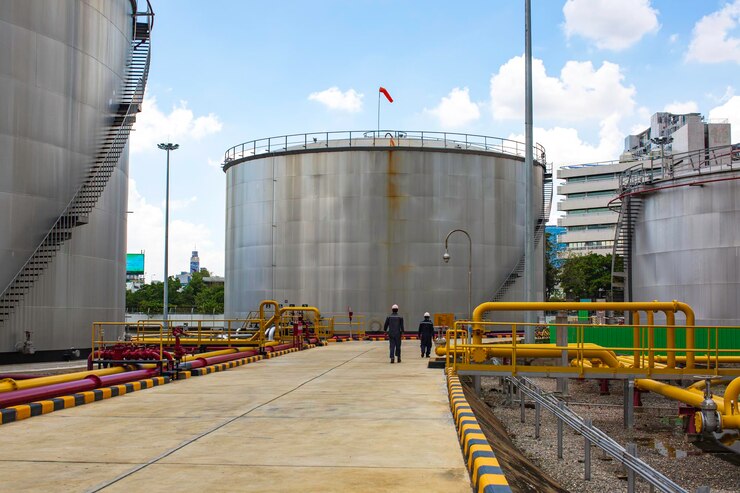
Oil derivation
Nafta
Product | Nafta |
|---|---|
Packaging | Flexitanks, bulk |
Price | Negotiable |
Payment Terms | Negotiable, T/T |
Delivery Terms
| FOB, CIF, CFR, CPT and FCA |
Min Order
| Negotiable |
HS Code | 271016 |
Naphtha is a class of hydrocarbon liquid fuels with high volatility and flammability, which is placed between light gases (such as LPG) and kerosene in the distillation tower of crude oil refining.
The major part of gas condensate, i.e. oil, which is collected from the gas well, is also composed of naphtha.
Naphtha precisely includes hydrocarbons with 5 to 12 carbon atoms, whose boiling point varies from 30 to 200 degrees Celsiu. But naphtha is usually available in two types of light naphtha (between 30 and 60 degrees with 5 and 6 carbon hydrocarbons) and heavy naphtha (between 90 and 200 degrees with 6 to 12 carbon hydrocarbons).
Naphtha has various uses. Chemical and petrochemical industries are the main buyers of naphtha, which use it as a feedstock for the production of various petrochemical products, including solvents and diluents, raw materials for all types of plastics, synthetic fibers, and industrial alcohols. For example, most dye thinners are made from naphtha, and most ethylene plastic compounds are made with naphtha. Also, using catalytic processes, naphtha can be converted into high octane gasoline and other petroleum fuels. Naphtha is a very powerful solvent with various applications, therefore it is also used for the production of detergents and the purification of other hydrocarbon substances. It is also used to produce polishes and varnishes and as heating and cooking fuel (similar to LPG and kerosene).
. Naphtha is also a component of shoe polish and is used as fuel in some lighters. Gas turbine engines are also able to use naphtha, and one of the types of jet fuel consists of naphtha.
| Analysis | Unit | Limit | Test Method |
|---|---|---|---|
| Densiby @ 15C | Kg/m3 | 700 max | ASTM D1298 |
| Distillation | C | ASTM D86 | |
| I.B.P | C | 35 min | ASTM D86 |
| 10% Evaporated Temp | C | 60 max | ASTM D86 |
| 50% Evaporated Temp | C | 85 min | ASTM D86 |
| 95 % Evaporated Temp | C | 125 max | ASTM D86 |
| F.B.P | C | 150 max | ASTM D86 |
| Residue | %vol | 1.5 max | ASTM D86 |
| Loss | %vol | 1max | ASTM D86 |
| Total Sulphur | %wt | 0.03 max | ASTM D1226 |
| Corrosion 3 HRS | 50C | No 1 Strip | ASTM D13 |
| Vapour Pressure | K.P.a | 75 max | ASTM D32 |
| Mercaphtan Content | PPM | 25 max | ASTM D322 |
| Colour, Saybolt | - | 20 min | ASTM D156 |
| Paraffins Content | %vol | 70 min | ASTM D131 |
| Oleffins Content | %vol | 2 max | ASTM D131 |
| Naphthenes Content | %vol | 10 min | ASTM D131 |
| Aromatics Content | %vol | 5 min | 350-68T |
| Lead (PB) P.P.B | Uop | 40 max | IP17 |
| C/H Ratio | Estimated | 5.5 max | Calculate |
| Gum Existent (air jet) | Mg/100ml | 3 max | ASTM D381 |
Questions? You’re covered.
NAFTA is produced during the refining process of crude oil through atmospheric distillation or crude oil fractionation. It is obtained as one of the intermediate distillation fractions between light hydrocarbons like gasoline and heavier fractions like kerosene and diesel. Further refining processes such as catalytic reforming and hydrotreating may be employed to tailor the properties of NAFTA for specific applications.
The production and use of NAFTA can have environmental impacts such as air pollution, greenhouse gas emissions, and water contamination if not managed properly. Emissions from refining processes and petrochemical plants may contribute to air quality deterioration and climate change. Spills and leaks during storage, transportation, and handling of NAFTA can also pose risks to ecosystems and human health.





